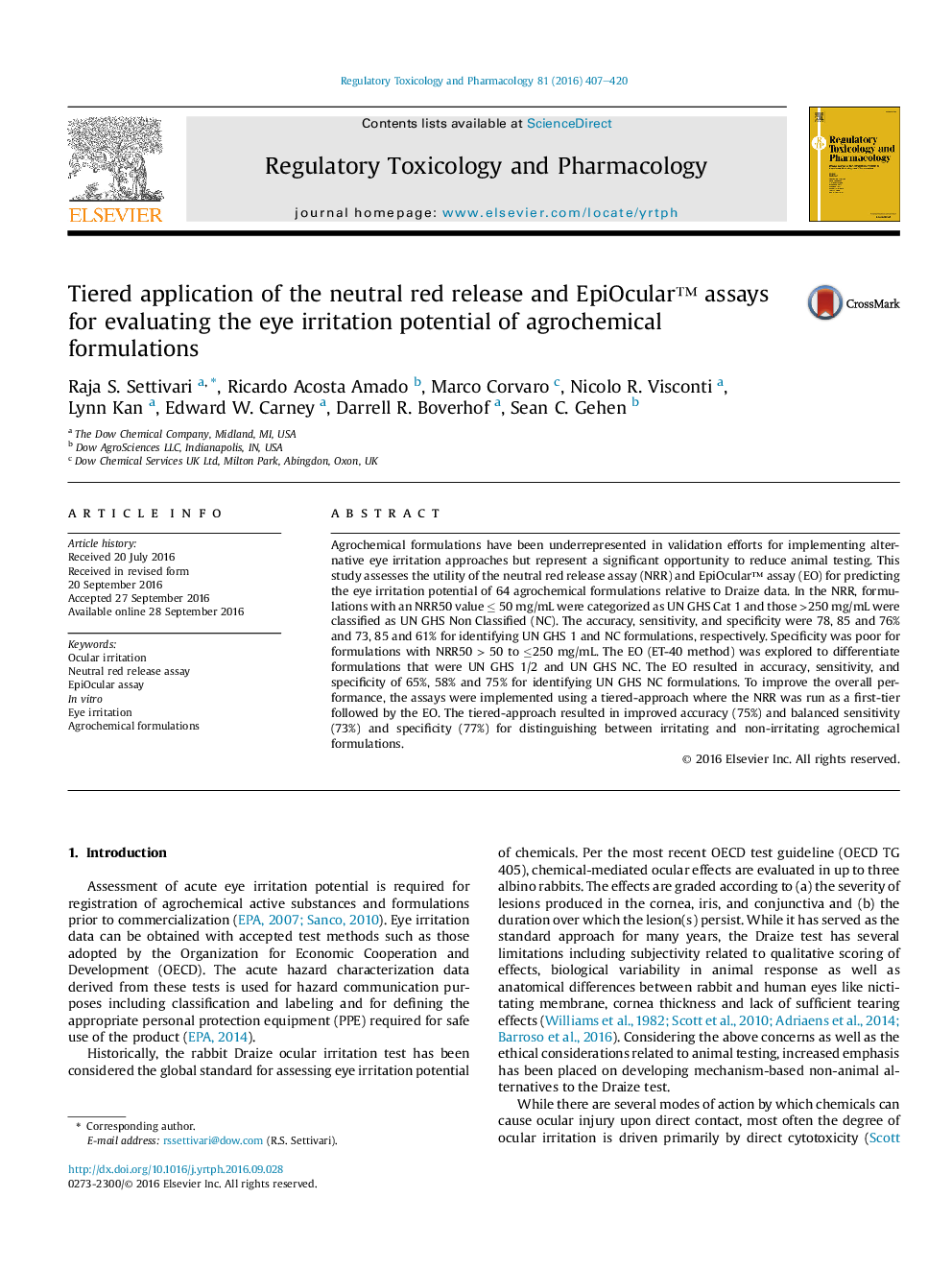| کد مقاله | کد نشریه | سال انتشار | مقاله انگلیسی | نسخه تمام متن |
|---|---|---|---|---|
| 5855795 | 1562122 | 2016 | 14 صفحه PDF | دانلود رایگان |

- Two alternative in vitro assays were evaluated for predicting the eye irritation.
- 64 and 51 formulations (11 types) were tested in the NRR and EpiOcular⢠assays.
- The NRR assay demonstrated good performance to identify GHS Cat 1 formulations.
- Tiered application of the assays provided improved performance.
Agrochemical formulations have been underrepresented in validation efforts for implementing alternative eye irritation approaches but represent a significant opportunity to reduce animal testing. This study assesses the utility of the neutral red release assay (NRR) and EpiOcular⢠assay (EO) for predicting the eye irritation potential of 64 agrochemical formulations relative to Draize data. In the NRR, formulations with an NRR50 value â¤Â 50 mg/mL were categorized as UN GHS Cat 1 and those >250 mg/mL were classified as UN GHS Non Classified (NC). The accuracy, sensitivity, and specificity were 78, 85 and 76% and 73, 85 and 61% for identifying UN GHS 1 and NC formulations, respectively. Specificity was poor for formulations with NRR50 > 50 to â¤250 mg/mL. The EO (ET-40 method) was explored to differentiate formulations that were UN GHS 1/2 and UN GHS NC. The EO resulted in accuracy, sensitivity, and specificity of 65%, 58% and 75% for identifying UN GHS NC formulations. To improve the overall performance, the assays were implemented using a tiered-approach where the NRR was run as a first-tier followed by the EO. The tiered-approach resulted in improved accuracy (75%) and balanced sensitivity (73%) and specificity (77%) for distinguishing between irritating and non-irritating agrochemical formulations.
Journal: Regulatory Toxicology and Pharmacology - Volume 81, November 2016, Pages 407-420